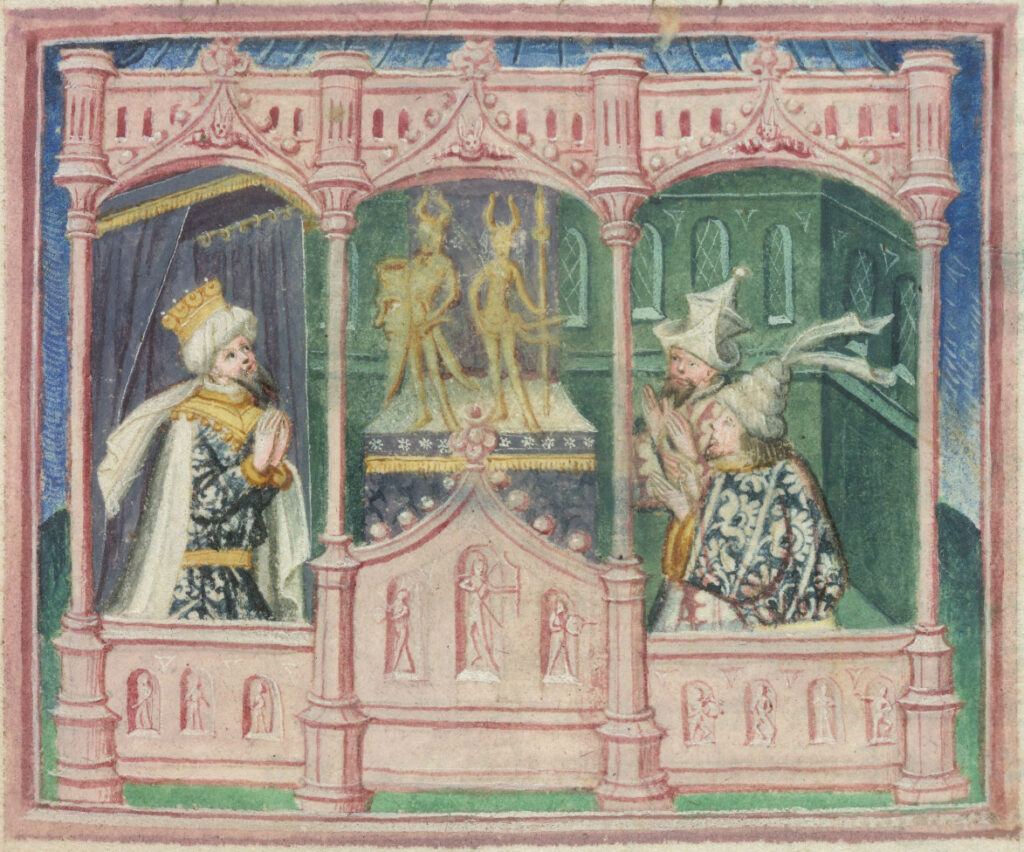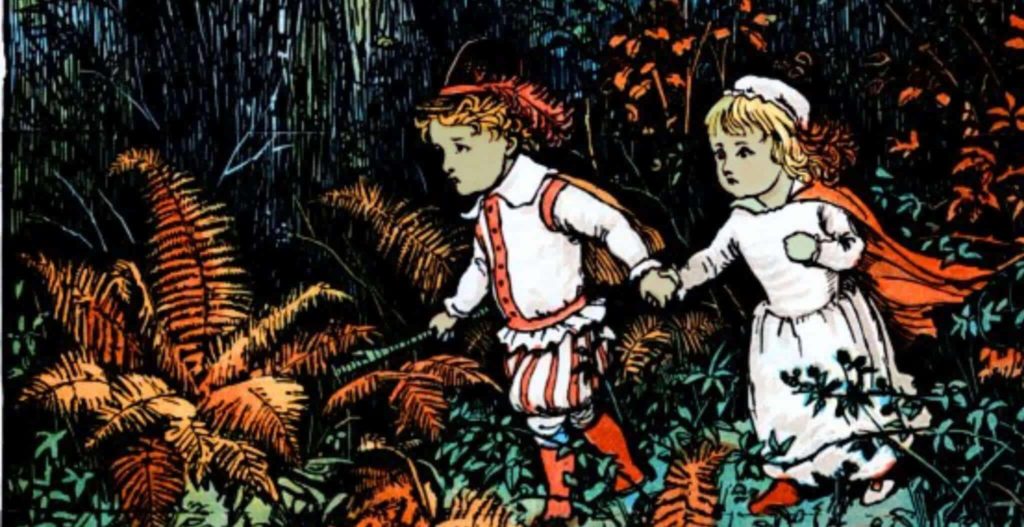Last updated on April 26th, 2023 at 12:09 am
For centuries, the name Ragnar Lodbrok struck fear into the hearts of people across Europe. The name conjures images of fearsome Viking warriors, their longships cutting through the waves as they set out to conquer new lands.
Ragnar was more than just a warrior, however; he was a figure of legendary proportions. One whose story continues to capture imaginations everywhere. His tale is filled with adventure, bravery, and treachery. He led his men on daring raids across Europe, fighting epic battles, and eventually meeting his ultimate fate.
But who was Ragnar Lodbrok? The truth is, much of his life is shrouded in myth and legend, and separating the fact from the fiction can be a difficult task. However, there is no denying the impact that Ragnar had on Viking history and culture. The man behind the legend is just as intriguing and evocative as the looming shadow he casts across all of Viking lore.

Early Life and Rise of a Legend
Ragnar’s life, lineage, and legend are shrouded in uncertainty. Given that during his lifetime – likely sometime during the 9th century – Scandinavia would have been illiterate, therefore; few written records survive to tell his tale.
There are a few facets of his early life and identity that can be distinguished, however. In both Icelandic and Danish sources recorded centuries after his life, Ragnar is identified as the son of the Swedish king Sigurd Ring, who was descended from the legendary Danish king, Randver.
Ragnar’s mother was also of royal blood. Sigurd is noted in the Icelandic sources as having sired a son with princess Alfhild of Álfheimr. With both of his parents being identified as Scandinavian Viking royalty, it is no surprise that Ragnar himself would rise to legendary fame.
Beyond these pieces of recorded facts, little reliable information is available about his early years and life of glory. It’s worth noting that the records of his lineage are similarly uncertain, with little else besides his direct parentage being agreed upon.
Still, there is no denying the impact that Ragnar had on Viking history and culture. His name became synonymous with bravery and conquest. Two sources in particular – the Icelandic sagas and the work of Danish historian Saxo Grammaticus – provide us with most of Ragnar’s story.
The Icelandic Sagas
Although they were certainly written after his life, quite a few Icelandic sagas give accounts and details of the legendary figure of Ragnar Lodbrok.
The Icelandic sagas are largely a collection of written histories – many of which are steeped in myth – that were likely recorded around the 13th century. The Tale of Ragnar Lodbrok, the Tale of Ragnar’s Sons, the Sögubrot, and Hervarar Saga, among others, all feature Ragnar.

According to Icelandic sources, Ragnar is identified as the son of King Sigurd Hring. He had multiple wives, the third of whom was Aslaug, daughter of Sigurd Fafnesbane. Some of the stories, like the Sagas of Scandinavian Prehistory, seem to recount his marriages and family life more in detail than his wartime conquest.
The sources tell of how he won his first wife, Thora Borgarhjort, by killing a giant snake. They also tell of how later he discovered Kráka, a beautiful peasant woman who was later revealed to be Aslaug. Legend says he had several sons with her, including Ivar the Boneless, Bjorn Ironside, and Sigurd Snake-in-the-Eye.
Ragnar’s sons would go down in history as even more heroic and legendary. The sagas describe how Ragnar, not wanting to be outdone by his warrior sons, decided to conquer England with only two ships. However, he was ultimately defeated by the superior English forces. The tales of his death in Northumbria are told across many accounts – most notably, the Krakumal, an Icelandic poem retelling Ragnar’s death.
Ragnar’s Capture and Death
According to various Viking sagas, like the Krakumal and others, Ragnar was captured by the Anglo-Saxon King Ælla of Northumbria after his failed attempt to conquer England.
Shipwrecked, quickly defeated, and completely disarmed, Ragnar became Ælla’s prisoner. Unfortunately, he decided to condemn the Viking warrior to death, casting him into a pit of poisonous snakes to suffer a painful, torturous death. Although Ragnar’s history is at times cloudy and uncertain, this fact, however, is recounted in almost all sagas.
Before his death, Ragnar famously sang his death song, which included the phrase, “How the little piglets would grunt if they knew how the old boar suffers.” This quote has become quite memorable in Viking history, encapsulating Ragnar’s bravery and defiance even in the face of death, as he assures all who are listening that his sons will soon avenge his death.
The tale of Ragnar’s capture and death at the hands of King Ælla in Northumbria is told across many sagas – the Tale of Ragnar Lodbrok and the Krakumal, among others. Although historians and scholars still debate the specifics of Ragnar’s life, the story of his death seems to be the most reliable piece of the puzzle.
Ragnar’s death is told similarly by the other of the two main records we have of him – the work of Danish historian Saxo Grammaticus, the Gesta Danorum.
Ragnar Lodbrok as Told by Saxo Grammaticus
The Chronicon Roskildense and the chronicle of Sven Aggesen are among the earliest Danish texts to mention the Norse King Ywar and his brothers, but neither source mentions their father, Ragnar Lodbrok, as a Danish ruler.
The first Danish text to do so is Saxo Grammaticus’ work, the Gesta Danorum, which provides an account of Ragnar Lodbrok that shares many similarities with the Icelandic sagas.
In Saxo’s version, Ragnar’s father Sigurd Ring is a Norwegian prince who married a Danish princess. Ragnar was elevated to Danish kingship after Sigurd Ring and his cousin and rival, Ring, were killed in battle. Saxo describes Ragnar as having fathered many children, marrying several times, and his many sons were installed as sub-kings in conquered territories.
Importantly, and as opposed to the Icelandic sources, Saxo’s account of Ragnar’s reign is mostly a catalog of successful Viking invasions across a vast array of territories.
To the reader, Saxo describes invasion after invasion. First, he leads an expedition to England, killing King Hama and conquering Scotland. Next, with his sons, he takes Norway, then Sweden, and installs his sons as kings in both domains.
The Scythians and the Kievan Rus’ are named as victims of Ragnar’s mighty wrath. He also led successful sea expeditions against the Bjarmians and Finns in the Arctic north.
Saxo’s account of Ragnar portrays him as a fearsome Viking leader who was known for his conquests across Scandinavia and neighboring regions. And, like the Icelandic sagas also, he makes clear the real reason for Ragnar’s place in Viking history – his sons.
Ragnar’s Sons and the Great Heathen Army
The legend of Ragnar Lodbrok may be uncertain, but the existence of his sons is supported by quite a great deal of evidence. And their impact, particularly on Britain, is not up for debate.
Ragnar’s sons Halfdan, Inwaer (also known as Ivar the Boneless), and Hubba led the legendary Great Heathen Army, a coalition of Norse warriors from Norway, Sweden, and Denmark, in 865. Records say their purpose was to avenge their father’s murder after his death at the hands of King Ælla.
The army crossed the North Sea in 866, captured and executed King Edmund of East Anglia, then sacked the city of York and defeated Ælla in combat, killing him and avenging their father.
The Great Heathen Army’s landing in Anglia marked the beginning of nearly two centuries of Viking occupation in England, led primarily by the sons of Ragnar Lodbrok. Ivar the Boneless ruled over the Great Heathen Army from 865 to 870, while his brother, Halfdan Ragnarsson, took over in about 870 and led the army in an invasion of Wessex.
Ragnar’s sons would go on to dominate Scandinavia, impact European affairs and politics, and head several royal dynasties. Despite the ambiguity surrounding Ragnar’s life and death, his sons’ legacy is undeniable. Their invasion of England marked a significant chapter in Viking history, one that would have lasting effects on both England and Scandinavia.
Who Was Ragnar Lodbrok?
While much of his life is shrouded in myth and legend, it is clear that Ragnar Lodbrok was a man of significant importance and his legacy continues to capture imaginations today. Ragnar’s supposed life story is filled with adventure, bravery, and treachery, leading his men on daring raids across Europe, fighting epic battles, and eventually meeting his death.
While historians and scholars still debate the specifics of his life, because it is difficult to find consistent accounts about this shadowy, almost mythical figure, he certainly left his mark on the pages of history. Whether he is remembered for his actions, his tragic death, or the influence on his sons and their conquests, Ragnar Lodbrok is a Viking hero of legendary proportions.
References
Butler, Josh. “The Real Ragnar Lothbrok.” Historic UK, https://www.historic-uk.com/HistoryUK/HistoryofEngland/Ragnar-Lothbrok/.
Hanson, Marilee. “Ragnar Lodbrok ~ Legendary Viking King, Ruler & Hero.” English History, 27 July 2016, https://englishhistory.net/vikings/ragnar-lodbrok/.
Milzarski, Eric. “Why the Real Ragnar Lothbrok Is so Shrouded in Mystery.” Military.com, 19 Mar. 2020, https://www.military.com/off-duty/2020/03/19/why-real-ragnar-lothbrok-so-shrouded-mystery.html.
“The Nine Books of the Danish History of Saxo Grammaticus.” Internet Archive, London : Norroena Society, 1 Jan. 1970, https://archive.org/details/ninebooksofdanis02saxouoft/page/541/mode/2up.
“Ragnar Lothbrok.” Encyclopædia Britannica, Encyclopædia Britannica, Inc., https://www.britannica.com/topic/Ragnar-Lothbrok.

